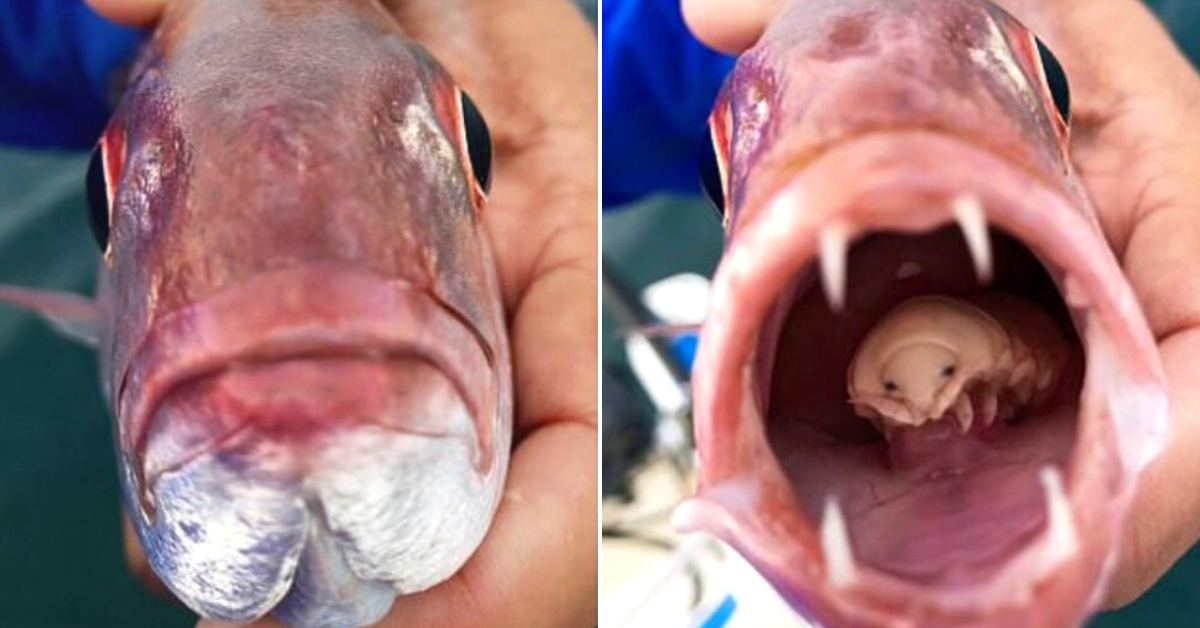This Nightmarish Parasitic Isopod Lives in the Mouth of Fish, Replacing Their Tongues and Feasting on Their Blood
The world is full of creepy creatures, and the tongue-eating louse, or Cymothoa exigua, may be one of the most bizarre of them all. This parasitic isopod lives in the mouth of fish and replaces their tongues, feeding on their blood and mucus.
In this article, we’ll take a closer look at this fascinating (and horrifying) creature, examining its life cycle, habits, and the impact it has on its hosts.

The Tongue-Eating Louse: An Overview
The tongue-eating louse is an isopod, a type of marine animal that includes crabs and shrimp. The female lice can grow up to an inch in length, while males are usually about half that size. What makes this creature particularly interesting is that every single Cymothoa exigua starts off as a male, but once it sets itself in place inside a fish and completes its maturation process, it transitions into a female. This only happens if the spot isn’t already taken by a female.
The parasitic journey begins with the louse entering the fish through its gills, which is how most fish parasites get into their hosts. After successfully entering the fish, the louse climbs to the base of the tongue and prepares for a long stay inside the fish. It clamps onto the tongue with its strong legs, securing itself in the fish’s mouth. Then, the parasite pierces the tongue, severing the blood supply and causing the tongue to atrophy and eventually fall off, leaving the fish with just a stump. The louse then attaches itself in place of the destroyed organ, acting as a prosthetic tongue for the fish, and feeding on mucus and blood.

The Impact on the Host Fish
While it may seem like the tongue-eating louse is killing its host, that’s not the case. In fact, it’s in the parasite’s interest that the fish lives as long as possible. The fish can even use the louse as a sort of organic tongue prosthesis, capable of performing all the duties and functions that a real tongue can – despite being pretty horrifying.
Interestingly, this parasitic isopod tends to target snappers, but it has been discovered in other fish species as well. While not much is known about what happens to the louse once its host dies, it’s possible that it detaches from it and starts to look for a new home.
The Life Cycle of the Tongue-Eating Louse
As mentioned earlier, every Cymothoa exigua starts off as a male, but once it transitions into a female, it can mate with a male that’s been living in the gills of the fish. After a short gestation period, the female gives birth to a whole new generation of lice that will continue this nightmarish cycle.

Are They Dangerous for Humans?
If you’re wondering whether these parasites are dangerous for humans, the good news is that they’re not. The Cymothoa exigua poses no major danger to humans, except that it may bite your finger if you try to touch it.

Conclusion
The tongue-eating louse is undoubtedly one of the most fascinating and creepy creatures in the world of marine biology. This parasitic isopod replaces the tongue of its host fish, feeding on their blood and mucus. While it may seem like a gruesome fate for the fish, the louse actually helps it to survive. And while the idea of having a creature living in your mouth may seem horrifying, it’s important to remember that this parasite doesn’t pose any major threat to humans.
VIDEO: https://www.youtube.com/watch?v=9vmmqUVCKl8
